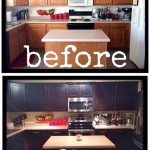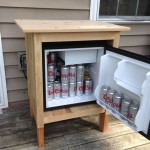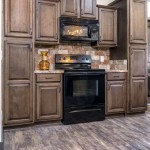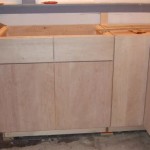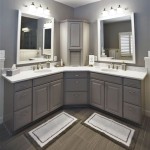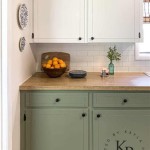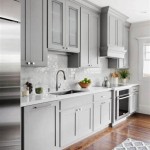Do You Need To Prime Cabinets Before Painting Them White?
The question of whether to prime cabinets before painting them white is a common one, fraught with varying opinions and practical considerations. While the allure of skipping a step and saving time is understandable, the long-term benefits of priming often outweigh the perceived inconvenience. Deciding whether to prime hinges on several factors, including the existing cabinet finish, the type of wood or material used in the cabinets, the desired final look, and the chosen paint's properties. A thorough understanding of these factors is necessary to make an informed decision.
Priming serves as a crucial intermediary layer between the existing cabinet surface and the fresh coat of white paint. It is not merely an extra, optional step; it is a foundational element that contributes significantly to the paint's adhesion, durability, and overall aesthetic appeal. Properly applied primer creates a uniform surface, ensuring that the topcoat of white paint exhibits consistent color and sheen. Furthermore, primer acts as a sealant, preventing underlying stains and tannins from bleeding through the final finish, a particularly relevant concern when painting wood cabinets white.
The decision to prime should not be taken lightly. It directly impacts the quality and longevity of the paint job. Neglecting to prime when necessary can lead to a host of problems, including poor paint adhesion, uneven color, visible imperfections, and premature chipping or peeling. Ultimately, careful consideration of the specific characteristics of the cabinets and the intended painting process will determine whether priming is a necessary and worthwhile investment.
The Importance of Adhesion: Why Primer Matters
One of the primary reasons for priming cabinets before painting them white revolves around the issue of adhesion. Most cabinet surfaces, whether they are made of wood, laminate, or melamine, are not naturally conducive to paint adhesion. Previous finishes, such as varnish, lacquer, or even existing paint, can create a slick or non-porous surface that makes it difficult for the new paint to properly bind. Without a properly prepared surface, the white paint may fail to adhere effectively, leading to chipping, peeling, or scratching over time.
Primer acts as a bonding agent, creating a more receptive surface for the paint to grip. It contains ingredients that penetrate into the existing finish, forming a strong, mechanical bond that anchors the new paint layer. This enhanced adhesion is particularly crucial in high-use areas like kitchens and bathrooms, where cabinets are subjected to frequent touching, cleaning, and exposure to moisture. A strong bond between the primer and the cabinet surface, and subsequently between the primer and the paint, ensures long-lasting durability and resistance to wear and tear.
Different primers offer varying degrees of adhesion-promoting properties. Certain primers are specifically formulated for use on difficult-to-bond surfaces, such as glossy laminates or slick melamine. These primers often contain specialized additives that etch the surface, creating microscopic irregularities that enhance paint adhesion. Selecting the appropriate primer based on the specific cabinet material and existing finish is essential for achieving optimal results and preventing future adhesion problems.
Moreover, proper surface preparation plays a critical role in maximizing the effectiveness of the primer. Thorough cleaning, sanding, and degreasing of the cabinets are necessary to remove any dirt, grease, or loose particles that could interfere with the primer's ability to bond. A clean, smooth, and slightly roughened surface allows the primer to penetrate effectively and establish a strong foundation for the paint.
Preventing Bleed-Through: Blocking Stains and Tannins
Another significant benefit of priming cabinets, especially those made of wood, is its ability to prevent bleed-through. Wood contains natural oils and tannins, which are organic compounds that can migrate to the surface and discolor the paint. These compounds are particularly problematic when painting cabinets white, as any discoloration will be readily apparent and can significantly detract from the overall aesthetic appeal.
Dark woods, such as cherry, mahogany, and oak, are especially prone to tannin bleed. However, even lighter woods can exhibit some degree of discoloration over time. The tannins are water-soluble and can be drawn to the surface by moisture or changes in temperature. When this happens, they can leach through the paint, causing unsightly yellowing or browning stains. These stains can be difficult to remove and may require multiple coats of paint to conceal, ultimately compromising the finish.
Primer acts as a barrier, sealing the wood and preventing the tannins from migrating to the surface. Stain-blocking primers are specifically formulated with ingredients that lock in the tannins, preventing them from leaching through the paint. These primers typically contain a high level of solids and are designed to create a thick, impenetrable layer. Oil-based primers and shellac-based primers are particularly effective at blocking stains and tannins, although water-based primers are also available with stain-blocking properties.
The choice of primer should be based on the type and intensity of the stain. For cabinets with minor staining, a water-based stain-blocking primer may suffice. However, for cabinets with significant staining or tannin bleed, an oil-based or shellac-based primer is generally recommended. Applying multiple coats of primer may also be necessary to ensure complete coverage and effective stain blocking. In addition to preventing tannin bleed, primer can also help to block other types of stains, such as water stains, grease stains, and marker stains.
Achieving a Uniform Finish: Creating a Consistent Canvas
Priming cabinets before painting them white is crucial for achieving a uniform and professional-looking finish. Cabinets often have variations in texture, color, and porosity, which can affect how the paint is absorbed and reflected. Without primer, these variations can result in an uneven finish with inconsistent color, sheen, and texture. Primer creates a smooth, consistent canvas that ensures uniform paint absorption and a flawless final result.
Different areas of the cabinet may have varying levels of porosity. For example, end grains of wood tend to be more porous than the flat surfaces, absorbing more paint and resulting in a darker or duller finish. Similarly, areas that have been previously patched or repaired may have different textures than the surrounding areas. These variations can create a patchwork effect, where the paint appears uneven and inconsistent.
Primer evens out the porosity of the cabinet surface, creating a uniform base for the paint. It fills in minor imperfections and smooths out rough textures, ensuring that the paint is absorbed evenly across the entire surface. This uniform absorption results in a consistent color and sheen, creating a more polished and professional appearance. Furthermore, primer can help to conceal minor imperfections, such as scratches, dents, and hairline cracks, further enhancing the overall finish.
Tinted primers can be particularly useful for achieving a uniform finish when painting cabinets white. A tinted primer can help to cover up existing colors and create a closer match to the final paint color. This reduces the number of coats of white paint required to achieve full coverage and ensures a more consistent and vibrant final result. The tint of the primer should be chosen based on the existing cabinet color and the desired shade of white paint. A light gray or off-white primer is often a good choice for painting cabinets white.
In conclusion, while some situations might appear to allow for skipping the priming step, the benefits it provides in terms of adhesion, stain blocking, and achieving a uniform finish ultimately outweigh the perceived time savings. A properly primed surface ensures a durable, beautiful, and long-lasting white cabinet finish.

The Best Way To Paint Kitchen Cabinets No Sanding Palette Muse

How To Paint Your Kitchen Cabinets In 37 Easy Steps 2 Cabinet Girls

Painted White Cabinets Before And After Reveal Photos Renovated Faith

How To Paint Laminate Cabinets Without Sanding The Palette Muse

Painted White Cabinets Before And After Reveal Photos Renovated Faith

How To Prep And Paint Kitchen Cabinets Lowe S

Refinish Kitchen Cabinets With Kilz Restoration Primer

The Best Way To Paint Kitchen Cabinets No Sanding Palette Muse

Painting Oak Cabinets White Best Diy Tutorial 2025

Diy Painting Your Kitchen Cabinets The Right Way
Related Posts

